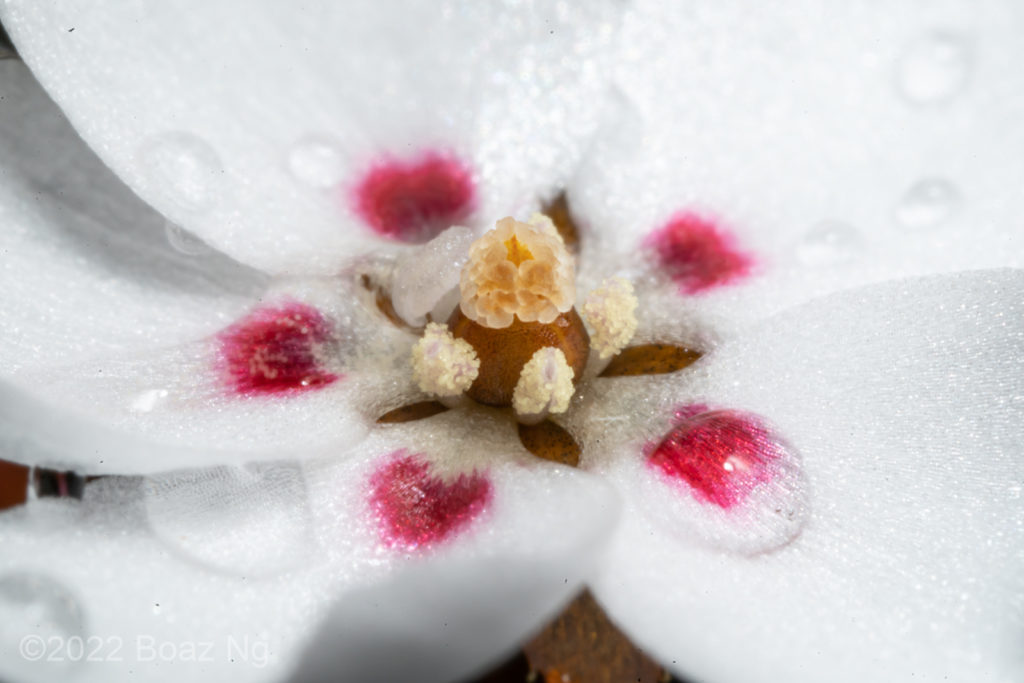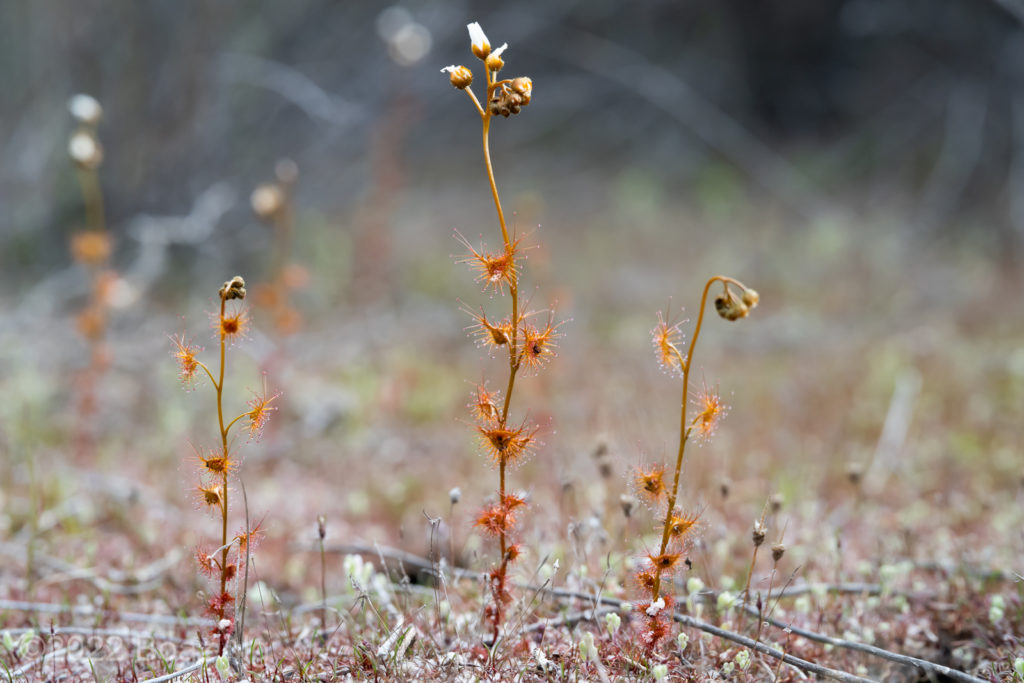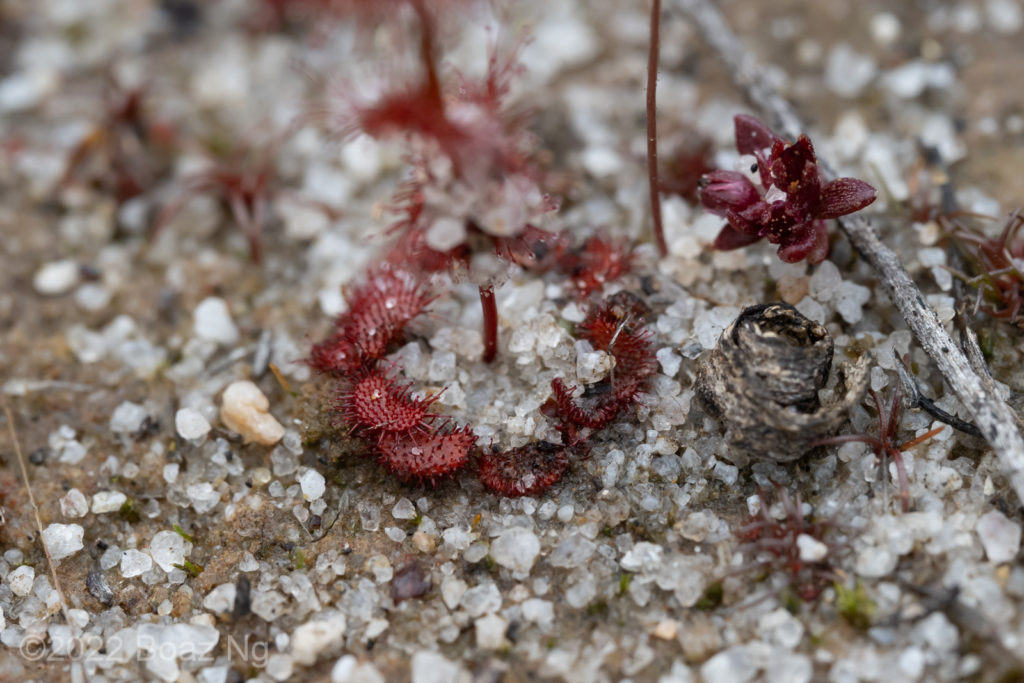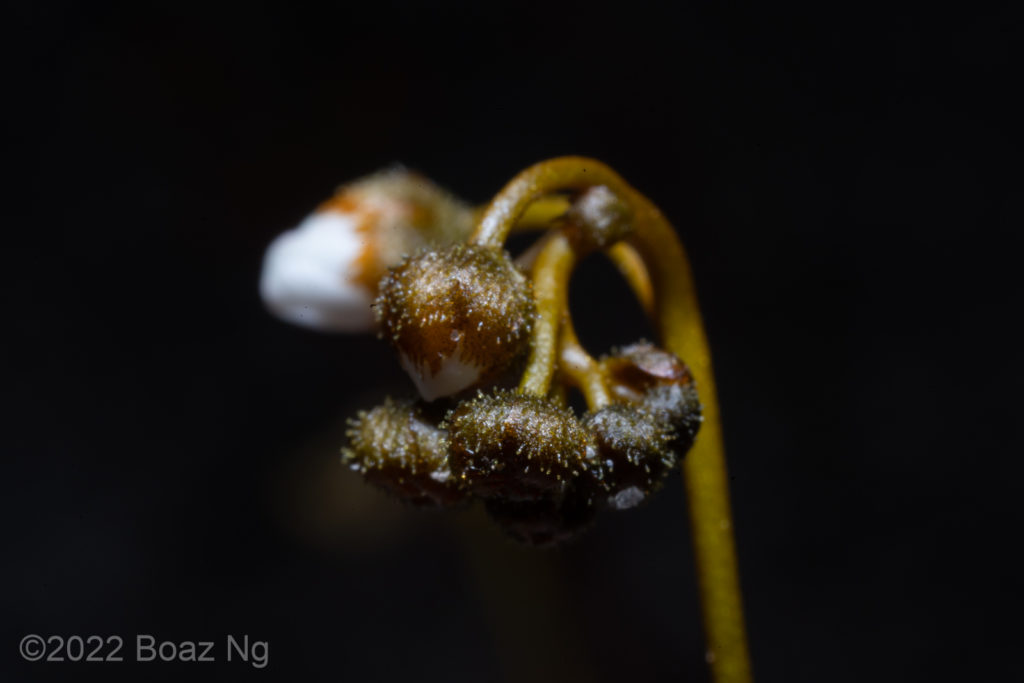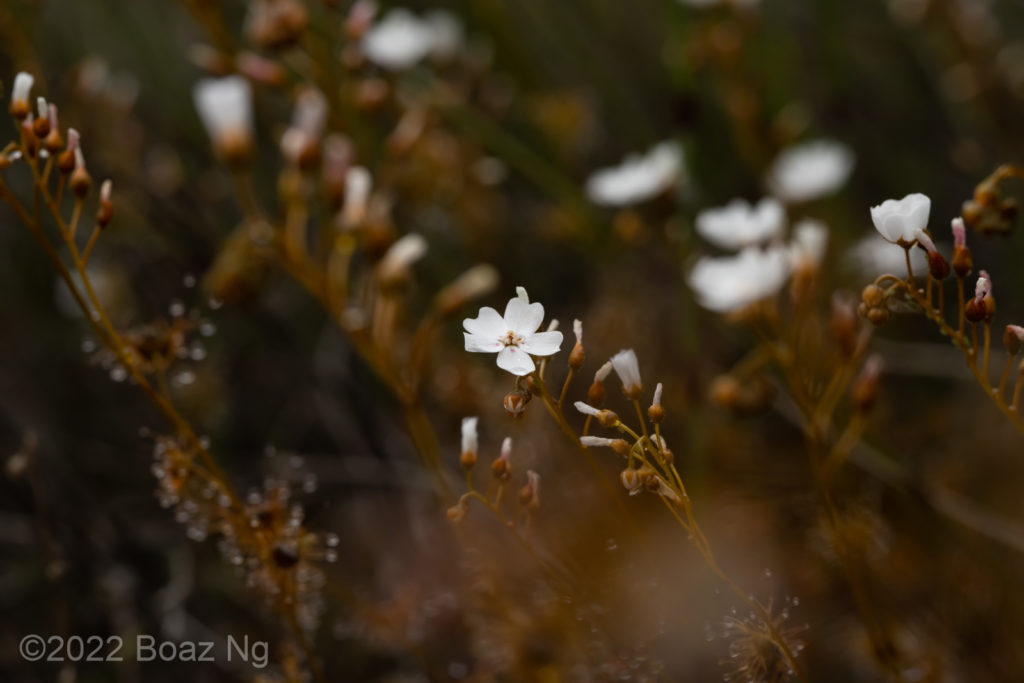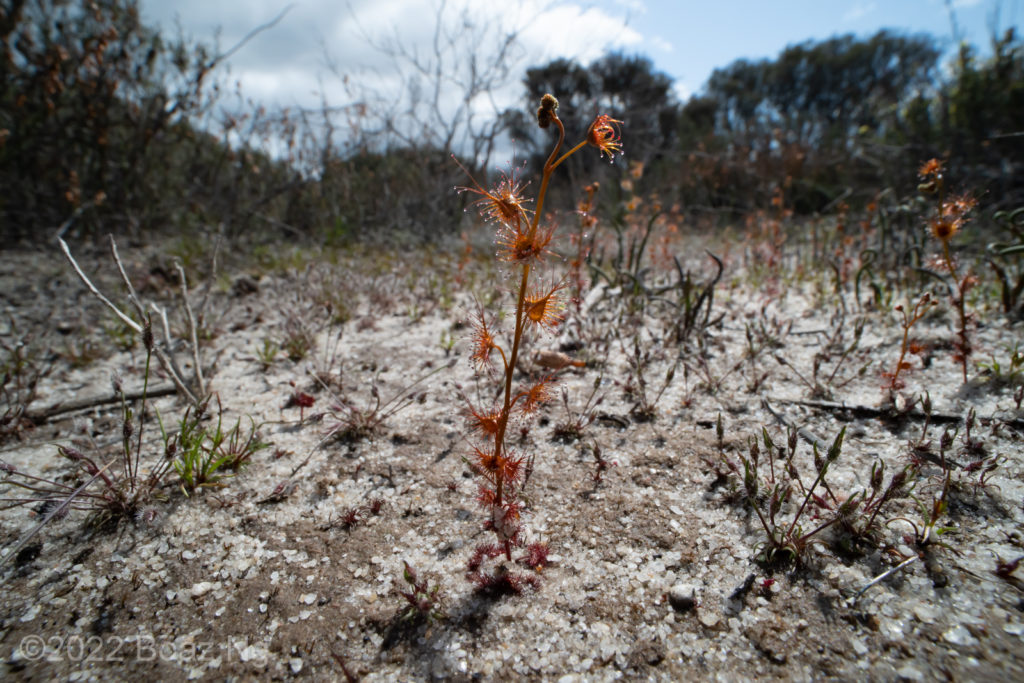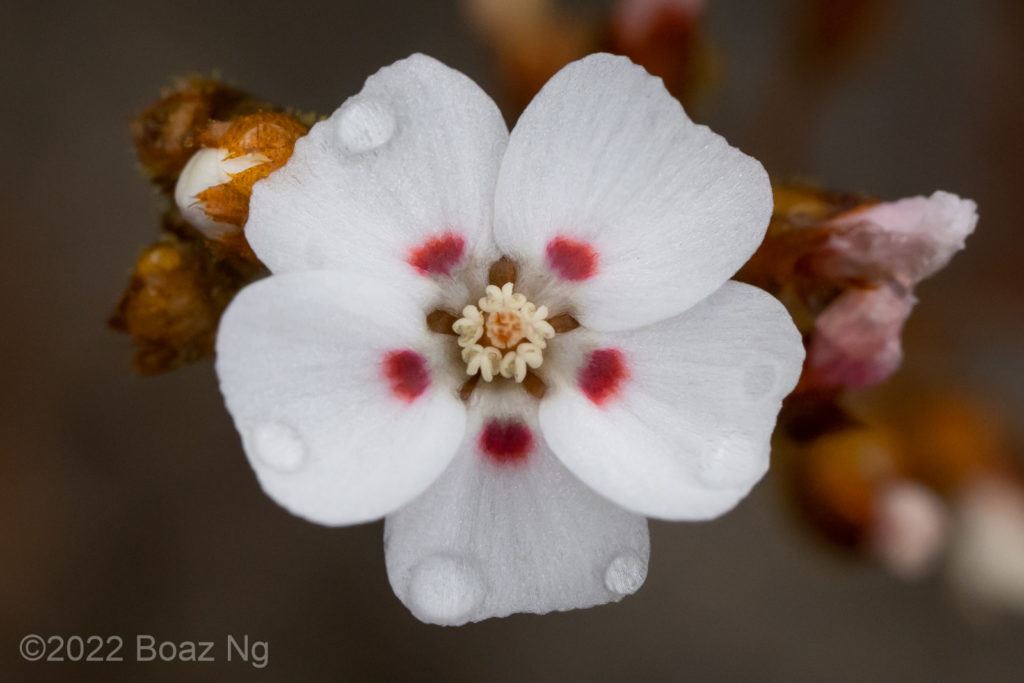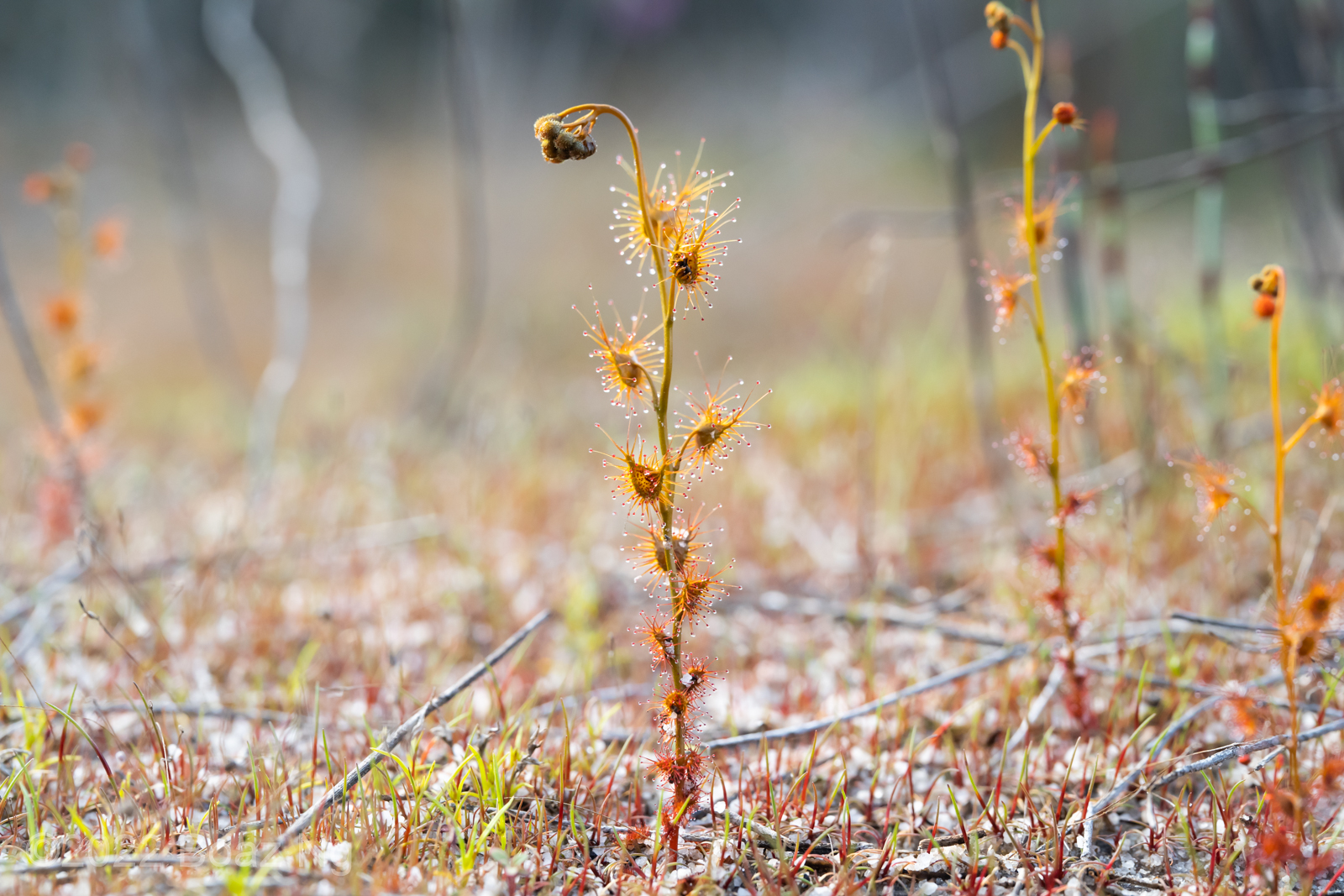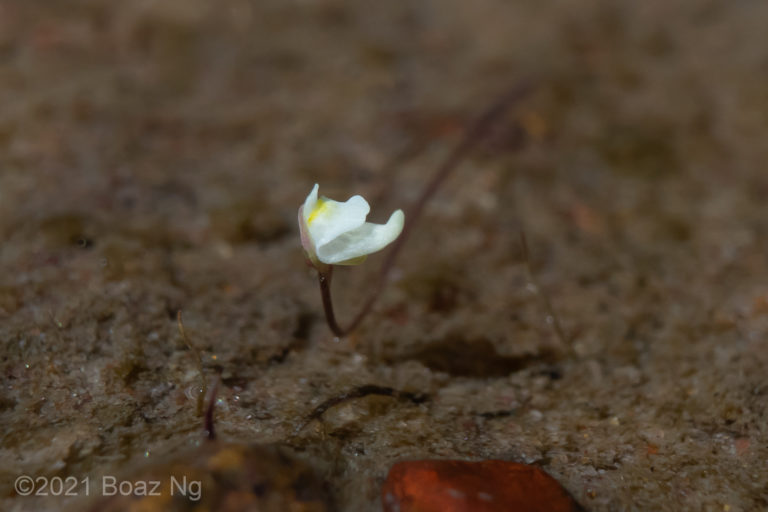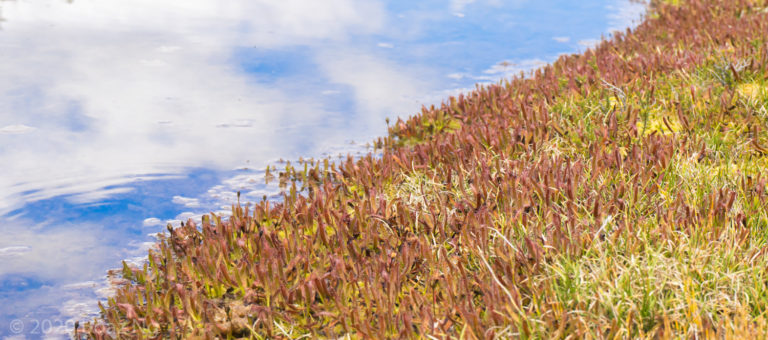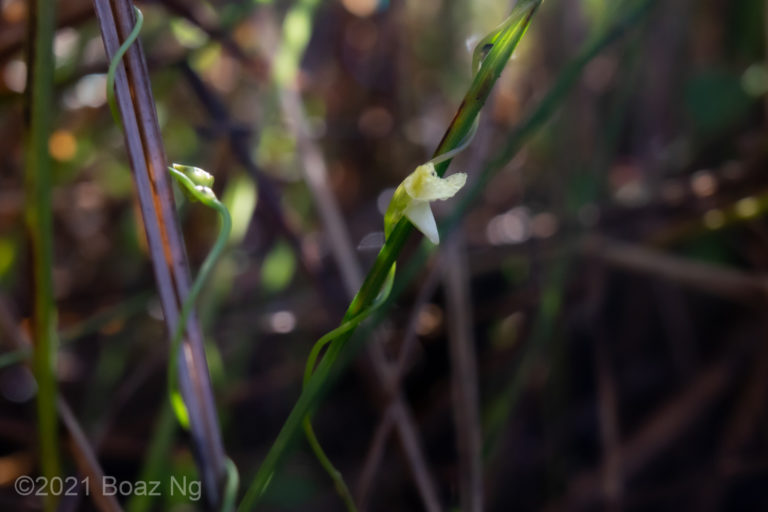Drosera bicolor is an erect tuberous sundew endemic to Western Australia. The species is named after its two-coloured petals that feature a red dot against a white base.
Drosera bicolor has an erect stem about 10 cm in height. The laminae are crescent-shaped and get smaller towards the base of the stem. A basal rosette of reniform laminae borne on straight petioles is usually present, although sometimes covered with sand. The sepals are covered with a sparse covering of short, gland-tipped hairs and the sepal margins are jagged. The petals are coloured white, with a pink-red dot towards the center. The styles are short and divided into many lobes, and clustered into a tight ball-like structure. The stamens are similarly short. Overall, the plants are bronze in colouration.
The species is known from a few sites in the Ravensthorpe to Jerramungup areas of southern Western Australia. It typically grows in white sand-topped silt at the edge of saline creeks, although it can also be found elevated in small hills above watercourses. The species breaks dormancy in winter and flowers in spring.
Drosera bicolor is a member of the Drosera peltata complex, sharing traits such as crescentic laminae on a self-supporting stem. Its closest relative is likely to be Drosera yilgarnensis as both these species are endemic to Western Australia and grow in the same general region, albeit in completely different niches. D. bicolor is distinguished by its two-coloured petals (those of D. yilgarnensis are completely white) and tightly clustered styles (those of D. yilgarnensis have many prominent protrusions).
